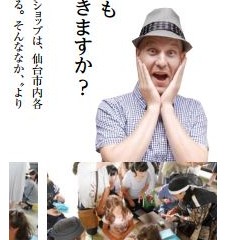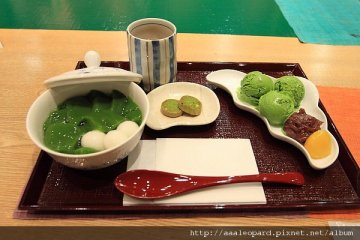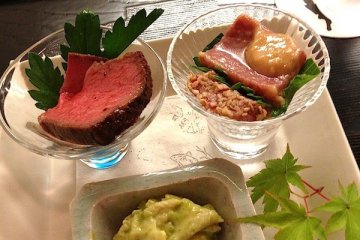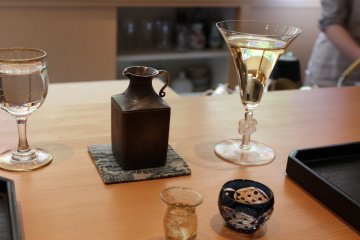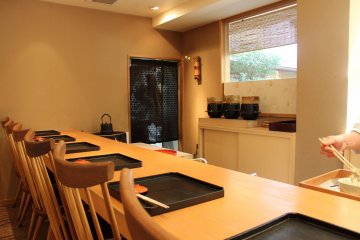Sado or cha-no-yu are words that mean tea ceremony. The practice originated from the Heian period (794-1185) when it was came from China as herbal medicine. The tea looked like modern day oolong tea and was a fermented, brown color. This is why the word 'brown' in Japanese is chairo (茶色), or 'the color of tea'. However, the popularity of tea quickly ceased. The tea craze in Japan wouldn't really start until the Kamakura period (1185–1333). At that time Dogen and other monks returned from their studies in China, introducing, among other things, green matcha tea. The act of drinking tea as an aspect of Zen training expanded rapidly. During the Muromachi period (1392-1573), a priest named Jyuko Murata preached, ''Tea shall be a spiritual exchange between the host and the guest.'' And so began the origin of today's wabi style tea ceremony. After that during the Aizuchi Momoyama period (1573-1600), teamaster Sen no Rikyu completed the formalities and laid out the process of the wabi style tea ceremony.
The tea ceremony is not about just serving tea. Of course the soul of the ritual is the matcha green tea; however, should the customer drink the stimulating tea on an empty stomach, that would be no good at all. From this point of view, it was thought it wouldn't be any harm if a light meal was served to accompany the tea. Soon after, kaiseki cuisine was born. Kaiseki is a combination of several high quality, bite-sized morsels. When kaiseki is served with tea, it is known as cha-kaiseki (cha meaning tea). There are several theories to the origin of the root of the word kaiseki (懐石). Here is an interesting one: in order to repel hunger and the cold, Zen monks carried around a heated stone in their robes next to their bellies (懐 means to carry, 石 means stone). Meanwhile, it is theorized that the Edo period tea ceremony focuses on the use of the motto ''one meal, three dishes'' because of their use of sashimi raw fish, a separate dish made in a boiling bowl, and finally something grilled. In today's world of developed food culture and art, the separation of kaiseki cuisine and tea may be common place. But bringing these two flavors and experiences together can create something truly wonderful.
It is no coincidence that the art of the tea ceremony developed along with the aristocratic culture of the emperor and imperial court in Kyoto. Rather, the uniquely delicious vegetables of Kyoto, which were so often used in the city's many temples, was the necessary inspiration to allow the food and newly introduced tea to blend together harmoniously. Developments in refrigeration transportation and modern food technologies has brought Kyoto cuisine to the world. Besides that, the hardworking chefs of today which are studying French cuisine are even trying to incorporate the creativity and possibilities Kyoto cuisine offers.
The same way a seasonal flower is placed in a tokonoma (a small nook in a Japanese style room), the beauty of Kyoto cuisine lies in the fact that it can represent the magnificence of the four seasons all on one plate or in one bowl. Part of the tea ceremony is also admiring the tea container. Exquisite cuisine utensils also express the changes of the seasons through their shapes and patterns. In this way, gazing at the cuisine as well as the bowls and plates used to hold the food will bring the customer happiness. I was able to escape to a place like this which let me unwind and balance my spirit from the stress accumulated during daily life. You can too, at Jiki Miyazawa.
See more photos of this blissful tea room here.


